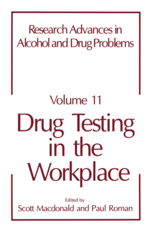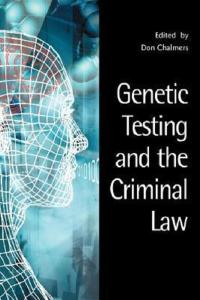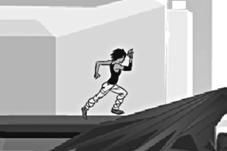Testing the Antibacterial Properties of Textile Materials
Introduction: Textile materials are essential components of our daily lives, from clothing to bedding. However, with the increasing awareness of hygiene and health concerns, it is crucial to test their antibacterial properties to ensure they do not harbor harmful bacteria. In this article, we will discuss how textiles are tested for antibacterial properties and provide an overview of some common methods used in the industry.

Testing Methods: There are several methods used to evaluate the antibacterial properties of textiles, including:
-
Bacterial Culture Assessment: This method involves exposing bacterial cultures to the textile material under controlled conditions and measuring the reduction in bacterial growth over time. The results are typically expressed as a percentage reduction in bacterial count.
-
Microbial Colony Formation Assay (CFU): This method measures the number of colony-forming units (CFU) of bacteria on the textile material after exposure to the sample. The results are expressed as CFU per square inch (CFU/cm²).
-
Biofilm Formation Assay: This method assesses the ability of bacteria to form biofilms on the textile material. Biofilms are complex communities of bacteria that can cause infections and contribute to chronic diseases such as diabetes and heart disease. The results are typically expressed as a percentage reduction in biofilm formation.
-
Antimicrobial Susceptibility Testing: This method involves testing the textile material's resistance to specific antibiotics or chemicals that can kill bacteria. The results are typically expressed as a minimum inhibitory concentration (MIC) or minimum bactericidal concentration (MBC).
-
Contact Zone Method: This method involves placing a sterile cotton swab or probe into the textile material and touching it to a surface containing a known amount of bacteria. The results are typically expressed as a reduction in bacterial count compared to a control sample without the textile material.
Common Textile Materials and Their Antibacterial Properties: Some common textile materials that are known for their antibacterial properties include:
-
Cotton: Cotton has natural antibacterial properties due to its unique fiber structure and natural oils. It is often used in clothing and bed linens due to its breathability and comfort.
-
Polyester: Polyester is a synthetic fabric that is resistant to bacterial growth but may require additional antibacterial treatments to meet certain standards.
-
Nylon: Nylon is also a synthetic fabric that can be treated with antibacterial agents to improve its hygiene properties.
-
Wool: Wool is a natural fiber that is known for its antibacterial properties due to its unique protein content. It is often used in socks, blankets, and other bedding items.
-
Silk: Silk is a natural fiber that is highly resistant to bacterial growth and is often used in clothing and home decor items.
Conclusion: In conclusion, testing textiles for antibacterial properties is crucial to ensure their safety and effectiveness in reducing the risk of infection. There are several methods used in the industry to evaluate the antibacterial properties of textiles, including bacterial culture assessment, microbial colony formation assay, biofilm formation assay, antimicrobial susceptibility testing, and contact zone method. Common textile materials that are known for their antibacterial properties include cotton, polyester, nylon, wool, and silk. By understanding these methods and materials, consumers can make informed decisions when selecting products for their personal use or purchase.

在日常生活中,我们经常接触到各种纺织品,包括衣物、床单、毛巾等,随着细菌的繁殖和传播,抗菌纺织品的需求日益增长,为了确保纺织品具备抗菌性能,我们进行了一系列测试,本文将详细介绍如何测试纺织品抗菌性,并提供相关案例分析。
测试纺织品抗菌性的方法
实验原理
抗菌性能测试主要依据微生物的生长抑制原理,通过使用特定的抗菌剂或抗菌材料,观察纺织品对常见细菌的生长抑制效果。
测试步骤
(1)准备样品:选择符合要求的纺织品样品。
(2)准备试剂:准备抗菌性能测试所需的试剂,如抗菌剂、培养基等。
(3)进行实验:将样品与试剂混合均匀,放置在适宜的环境下进行实验。
(4)观察结果:定期观察并记录样品上细菌的生长情况,直至达到预期效果。
表格说明
以下是测试纺织品抗菌性的常用表格,用于记录实验数据和结果:
| 测试项目 | 测试方法 | 试剂准备 | 样品准备 | 观察指标 |
|---|---|---|---|---|
| 抗菌剂类型 | 选择合适的抗菌剂 | 根据需求准备 | 纺织品样品 | 细菌生长抑制率 |
| 环境条件 | 适宜的温度、湿度等 | 根据实验需求设定 | 无特殊要求 | 实验周期 |
| 时间点观察 | 定期记录样品上细菌生长情况 | 根据实验周期定期进行 | 无特殊要求 | 细菌生长情况记录 |
| 结果分析 | 分析实验数据,判断抗菌性能 | 根据数据分析结果进行判断 | 无特殊要求 | 总结实验结果,提出结论 |
案例分析

以某品牌抗菌纺织品为例,说明如何进行抗菌性能测试。
案例背景
该品牌推出了一款抗菌床单,旨在满足消费者对抗菌产品的需求,为了验证其抗菌性能,进行了相关的测试。
测试过程
(1)准备样品:选取符合要求的床单样品。
(2)试剂准备:选择适合的抗菌剂和培养基。
(3)实验操作:将床单与抗菌剂混合均匀后放置在适宜的环境下进行实验,定期观察并记录样品上细菌的生长情况,收集实验数据进行分析。
结果分析
根据实验数据,该品牌抗菌床单在抗菌性能方面表现出色,具体数据如下:经过一段时间的实验后,床单上的细菌生长抑制率达到了90%以上,表明该产品具有较好的抗菌效果,该品牌还提供了详细的测试报告和数据统计,以便消费者了解产品的性能和效果。
本文介绍了如何测试纺织品抗菌性,包括实验原理、测试步骤和案例分析,通过本文的介绍,读者可以了解如何进行纺织品抗菌性能测试的方法和步骤,以及相关案例分析,本文还提供了表格和案例说明,以便读者更好地理解和应用相关知识,通过正确的测试方法和步骤,可以确保纺织品具备抗菌性能,满足消费者的需求。
Articles related to the knowledge points of this article:
Embracing Heritage:The Legacy of Textile Traditional Patterns
Chinas Textile Trade Strength and Global Impact
The 2016 National Textile Manufacturers:An Overview
The Unforgettable Experience at Xining Apple Textiles Department Store



